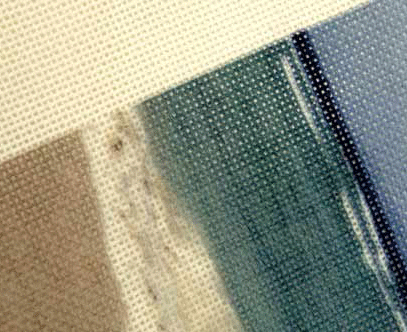Related:
Back to Site Stores ({{popupVm.storeTotalCount}})
Artists ({{popupVm.artistTotalCount}})
If you are an embroidery tapestry or needlepoint enthusiast, we can print any image on our needlepoint tap...
Read MoreShips in 1 - 2 days
Delivery: €9.95
Handmade item
We print onto polyester coated cotton tapestry canvas, as well as 100% cotton fabric which is perfect for natural fabric aficionados; available in 10, 12, 14 and Aida 14, count sizes with an interlocking weave.
Care instructions
Surface wipe only. Clean gently by hand with mild soapy damp cloth.



Needlepoint Canvas Information
The differences between embroidery and needlepoint needlecrafts are as follows:
Needlepoint is also known as canvas work, especially in England. Photos or images can be a brilliant way to create new tapestry designs.
Fabric Info
Needlepoint canvas is usually polyester coated cotton or linen although recently plastic "canvas" has grown in popularity. Needlepoint fabric is stiffer than that used for embroidery or cross-stitch. Our tapestry is made with cotton canvas, as well as 100% cotton in a block weave – it is one of the most popular types used for embroidery and especially suited for beginners. The defined holes in the fabric are best for regular cross stitch, half stitch, and backstitching. Fractional stitches (1/4 and ¾ stitches) it becomes slightly more difficult to use with standard tapestry wool. The material is flexible enough to bend and fold easily, that is why we recommend using a frame for better handling.
Thread Info
As a rule, you should usually use two strands of floss for our personalised tapestry fabric in counts 12-18. Tapestry wool is suitable for canvas counts between 10 and 14. For finer details in the photo tapestry, we suggest using Persian yarn or Crewel wool. Persian yarn is usually made of three strands of Crewel wool twisted together; it can be split into individual strands easily. Crewel wool is very fine, made of two spun fibres twisted together. As stated above, when sold, the thread usually contains two or more strands. You can get threads from your local haberdashery or thread shop.
Your design is printed onto the tapestry material using deep infusion printing techniques. This ensures that the colours are as vivid as possible and that the design will not peel away or rub off. It is worth bearing in mind that the higher the number, the smaller the holes will be, and the more of them there will be. For example, 10 point has larger holes, and fewer of then take up the fabric that 14 point, which has more holes which are smaller. If you have a very detailed image with many fine lines you may want to bear this in mind when ordering.
If you need extra space around your design (framing, stitching, etc), make sure to add this white space within the design interface as we strictly print the dimensions selected on the design interface.
As the tapestry fabric is coated cotton with several holes on it, it is important to use darker/ high contrast images to make sure that the final print is clearly visible and easy to sew on. White or light-coloured images will result in a faint print that will be difficult to work with.